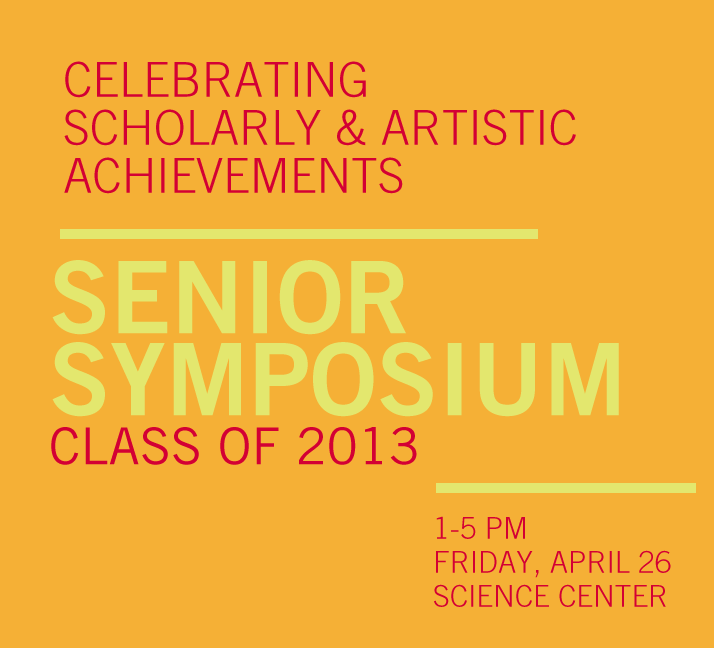Campus News
Interpreting the Past
April 22, 2013
Liv Combe

All members of the campus and community are invited to take part in Oberlin’s annual celebration of the academic and artistic accomplishments of members of the graduating class. The 2013 Senior Symposium is set for Friday, April 26, from 1 to 5 p.m. in the Science Center.
Oberlin OnCampus is offering a series of sneak peeks of the presentations that will be made during the symposium. Today’s pick:
How Does the Present Affect Interpretations of the Past?
La Nación and the Memory Debate in Argentina
A native of Philadelphia and a Latin American studies major, Alexis Burdick-Will studied abroad in Buenos Aires, Argentina during the fall of 2011, the 10th anniversary of Argentina’s economic collapse. “All around the city there were signs, art installations, and protests about how the same powers and individuals who had caused the economic crisis were still in power, promoting policies that originated with the dictatorship between 1976 and 1983,” remembers Burdick-Will. Her project analyzes the changes and patterns within the editorials of leading conservative newspaper La Nación from six major events in Argentina since 1983, the year the country transitioned from a dictatorship to a democracy. Burdick-Will, who has taught Spanish to local elementary school children through Oberlin’s Spanish in the Elementary Schools (SITES) program, will be teaching elementary school in New York City as a corps member of Teach for America.
Burdick-Will will make her presentation during the symposium’s first session (1:30-2:30 p.m.) on the panel The Weight of a Nightmare: Making Sense of History in Guatemala, Chile, and Argentina, moderated by Patrick O’Connor, chair of Hispanic studies and associate professor of comparative literature. Download the full 2013 Senior Symposium Schedule.
DoingWhat Academics and Artists Do
This year, 50 students will present their independent and collaborative work to the Oberlin community. Topics range from the reproductive rights movement at Oberlin in the 1960s to groundwater storage in China and Tibet; the effect of heavy metal ions in Huntington’s Disease to themes of obsessions and incest in Gabriel García Márquez’s One Hundred Years of Solitude. Participating student majors and concentrations run the gamut from archaeology and geology to ethnomusicology and gender, sexuality, and feminist studies.
Opening remarks by Associate Dean of the College Arts and Sciences Joyce Babyak will take place at 1 p.m., with panels beginning at 1:30, 2:45, and 4 p.m. The symposium is divided into three section, each section consisting of five to six panels. The panels feature three students offering 12-minute presentations, with 15 minutes reserved at the end of each panel for questions. The reception for the event will begin at 5 p.m. in the academic commons of the science center.
Babyak sees the senior symposium as an opportunity for graduating students to share their work with their peers, the faculty, and staff who have supported their educations aspirations, and the broader Oberlin community.
“It is a culminating experience in which students do just what academics and artists do: present their work, whether in the form of a research presentation or a creative performance or show, and engage in open conversation about that work,” says Babyak.
You may also like…
Students Explore Oberlin’s Range of Research in This Year’s Lab Crawl
Lab Crawl was well attended this semester with many students making stops at demonstrations held in one or more of 22 labs across campus.
This Week in Photos: Alzheimer's Research
A picture of a student transferring an opaque substance into a gel box in a neuroscience lab serves as inspiration for this week’s photo series.
Undergraduate Research Symposium Showcases Student Research Virtually
All are invited to the online symposium that features research from Oberlin College and Conservatory of Music students.


